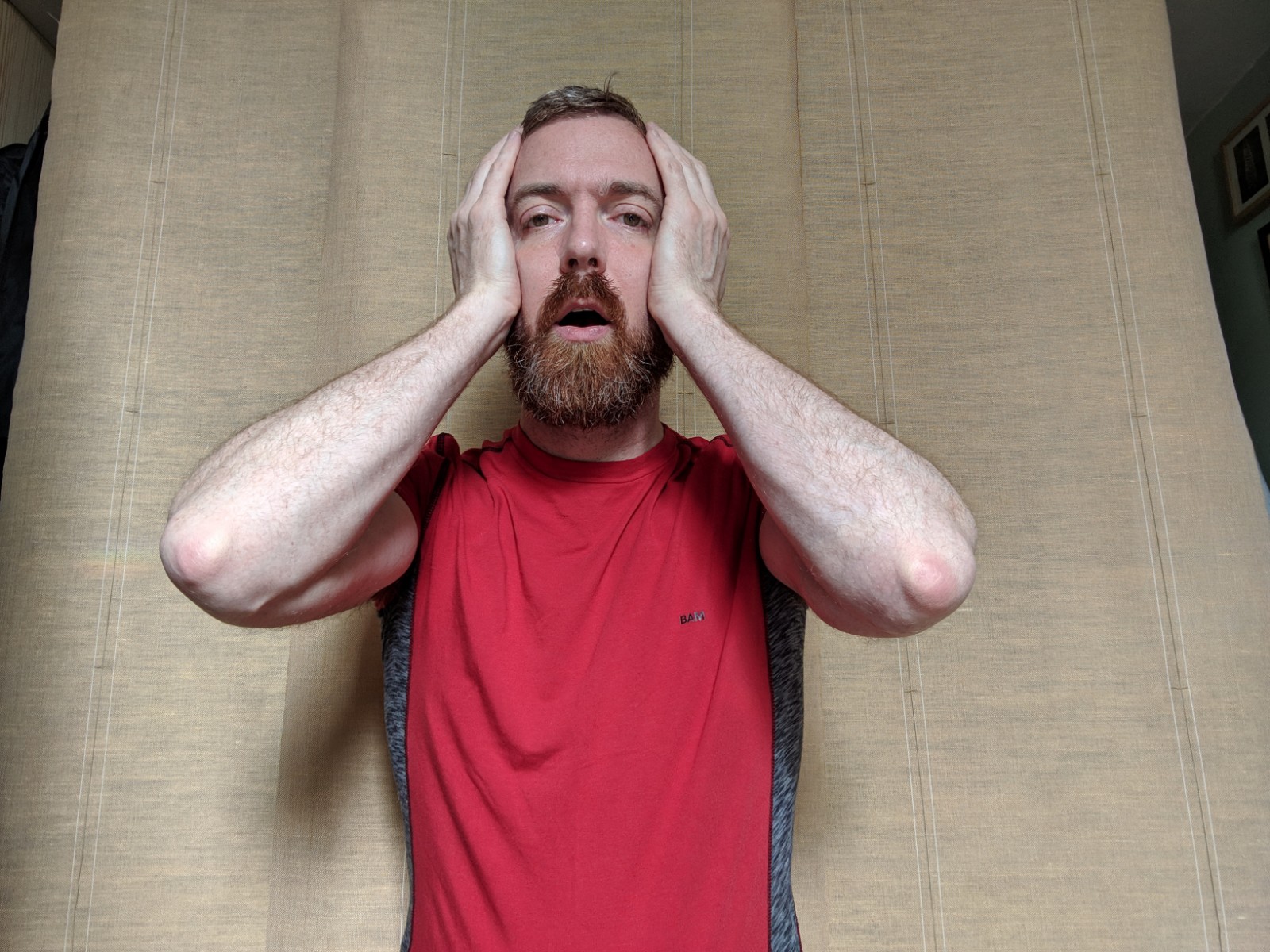So, an area of the body that can hold a lot of tension is the jaw. It is the only bone that we consciously move that crosses the mid line of the body and has a joint at each end. There are so many descriptions that refer to keeping the mouth closed: “Grin and bear it”, “Grit your teeth”, “Shut it!”, “Swallow your words”. We can also thrust our chins forward in an assertive or aggressive way in response to situations where we feel we need to stand up for ourselves. Many people clench or grind their teeth (Bruxism) and the grinding might be an echo of the time when our teeth were one of our primary weapons (an idea called Thegoism) and also think of animals that are threatened (dogs showing their teeth).
I have suffered with intense pain caused by tension in the jaw muscles and so I pay close attention to unwanted tension in this area. So this is a stretch I tend to do quite regularly to maintain a sense of space in my jaw joints.
Please note, this is to try to ease the soft tissue (muscles, tendons) of the jaw only and not for structural issues. If you are not sure why you have the pain and think it might be structural please consult your dentist.
Equipment
None
Steps
- Sit comfortably, and in an upright (spine long) position.
- Bring both your hands to the sides of your head. The heels of your hands want to rest above the temples in either side, and just in front of your ears.
- To check you are in the right area, clench your teeth (or bring them together) and you should feel things changing under your hands.
For info: this is the Temporalis muscle. - Apply a gentle inward pressure with your hands. You are not trying to squash your head, but slowly sink in to the skin and muscles. This should be slow and steady so it might take a few minutes to sink in.
- The weight of the arms will help to drag the heels of your hands down the sides of your head, aiming towards the bottom edge of your jaw bone.
- Continue this drag all the way down the sides of your face (There is a point when you will resemble the famous picture by Edvard Munck: which is why I refer to this as the Scream)
- Allow your jaw to be soft and try not to forcibly hold the teeth together: this is about trying to let things soften an move away from each other.
- This dragging motion should probably take a couple of minutes as your’re trying to help elongate the myofascia/connective tissues which respond differently with slower motions.
- Repeat the dragging motion two or three times.




Considerations
If this movement causes unhelpful (bad) pain then stop.
If you have dislocated your jaw in your past then do not do this exercise without advice from your dentist.
You don’t want to put too much pressure directly over the temples, ease the inward pressure up a bit in this area.
Video
A short video to talk you through the exercise. You should slow it down a bit when you’re doing it as a stretch.
Tim


